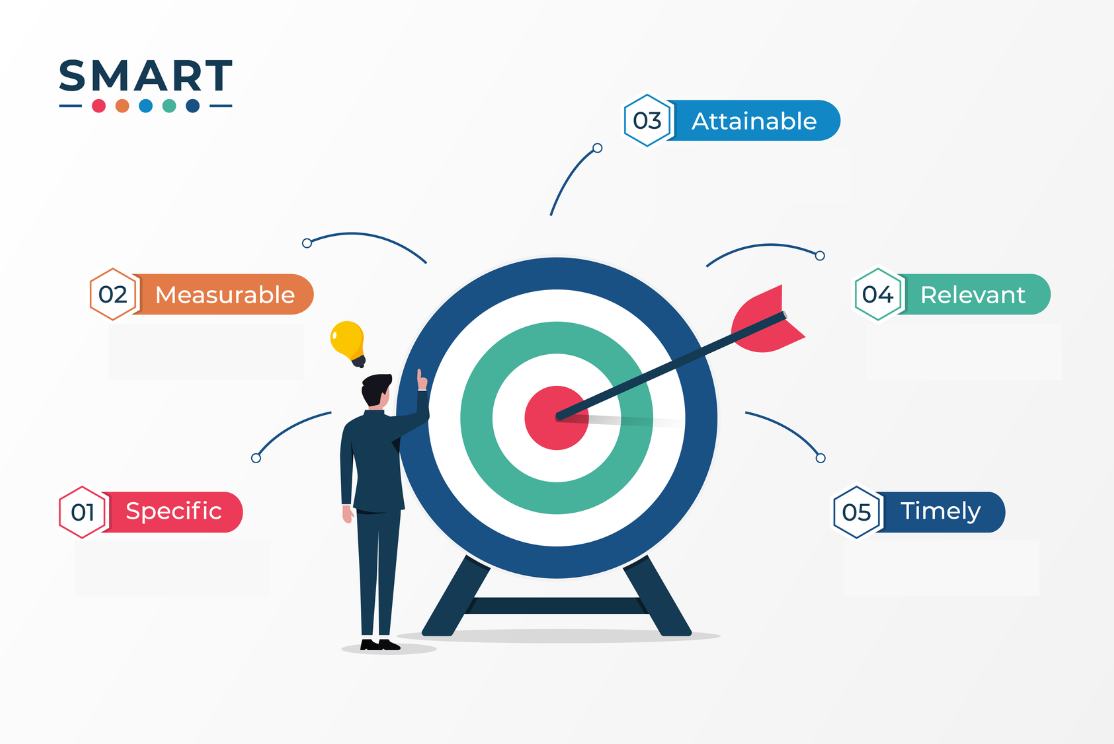“Key Performance Indicators (KPIs) are the critical (key) quantifiable indicators of progress toward an intended result” (kpi.org).
In an ERP ROI article, we briefly touched on Key Performance Indicators as being very helpful for identifying and numerically expressing opportunities for improvement necessary in justifying and ensuring successful ERP deployment. Still, the KPI subject requires separate explanation, and while it may sound self-explanatory and simple by its very name, introducing KPIs to your company’s environment should be done with care and foresight.
From finance and IT to sales and marketing, key performance indicators guide companies toward specific business goals and strategic objectives. At their core, KPIs mean data collection, storage, cleaning, and synthesis to measure their performance against set targets. The results are analyzed to assess current systems or recent changes, helping business determine whether adjustments are needed to improve outcomes and meet future objectives. One objective in using KPIs is to show results for teams to make more accurate strategic decisions. Below, you will find examples of common business processes and corresponding measurement cases, which can be transformed into specific KPIs for validating specific ERP project outcomes.
KPI is an ambiguous term that needs cross-organizational clarity
The field of Key Performance Indicators is filled with confusion. Often, KPIs are used with metrics or measures interchangeably, or conflated with goals.
Investopedia has a very hard to digest definition, which effectively equates KPIs with measures – only suggesting that they must be used for long-term performance and strategic achievements in order to be called KPIs; “Key performance indicators (KPIs) are quantifiable measurements used to gauge a company’s overall long-term performance. KPIs specifically help determine a company’s strategic, financial, and operational achievements, especially compared to those of other businesses within the same sector. They can also be used to judge progress or achievements against a set of benchmarks or past performance.”
While it’s mostly true that the professional-sounding term “KPI” is typically only brought up in high-level conversations, it does not have to be that way. And whether something is measured over some long-term strategic horizon as opposed to within a small project does not justify needing to find and use a different term. Importantly, for ERP projects, Odoo implementation is considered to have a strategic nature, and in this respect, Investopedia’s definition is helpful.
OnStrategy™ consulting, for example, gives its own definition: “Key performance indicators, or KPIs, are the elements of your organization’s plan that express the quantitative outcomes you seek and how you will measure success. In other words, they tell you what you want to achieve and by when.” This description is shorter than Investopedia’s but still a redundant mind twister that clearly touts KPI as a synonym for goal (i.e., “what you want to achieve”).
Due to variety of interpretations as to what constitutes KPIs, even people within the same organization might carelessly toss around this term. Problems arise when such carelessness becomes a commitment for expected ERP project outcomes, which in turn results in dubious interpretations of a project’s success (or failure).
Context
While I am not the final authority in assigning meaning and proper definitions to words and terms, I do think that clarity is essential. So, here I am offering what I consider to be the most helpful and useful approach to this topic, which clearly positions KPIs as differentiated from measures and goals.
The concise KPI definition from kpi.org comes in handy: “Key Performance Indicators (KPIs) are the critical (key) quantifiable indicators of progress toward an intended result.” This is succinct and gives performance (that is, “progress toward”) its due attention.
The “intended result” in the definition above is most commonly referred to as “goal.” A goal, especially when considered in the context of an ERP project, has to be SMART (specific, measurable, attainable, relevant, timed) and should contribute to a more generic and typically less specific yet important business objective, such as, “to become more efficient” A fitting discussion on this type of mapping of goals to objectives, strategy, etc. goes beyond the scope of this article. Explaining KPIs, however, without at least contextualizing them with goals would be meaningless.

- A set of SMART goals answer these questions: “What tangibly do we want to accomplish within a specific time frame that will take us closer to our envisioned future objectives? What gaps do we need to close?”
- KPIs, in their turn, answer, “What are the best (key) signs (or indicators) that we are moving in the right direction at the right speed and that our approach (e.g. in Odoo implementation) really works?”
- We need to design or determine what parameters and by what means we are going to collect in order to gauge those signs (KPIs). Those means and parameters are called measures.
So, while KPIs define, generally, the best indicators of progress toward a defined goal, measures are the “nuts and bolts” of how it is all actually done.
Examples
A key difference between implementing a single application (e.g., inventory management) and ERP is that the former involves a relatively isolated business function and processes within it, whereas ERP’s strength lies in automating and streamlining cross-functional processes, making outcomes more strategic. So, while there is nothing wrong in pursuing various efficiency and effectiveness improvement goals within a specific business function (e.g. better wave planning, decreasing picking error rates, optimizing warehouse space usage, improving inventory accuracy as in some Oddo projects), a good starting point for defining ERP project goals (and consequently KPIs) is the so-called “End-to-End” (E2E) or “Core” processes.
Here is a short sample list of the most common business end-to-end processes with examples of frequently cited measures, which can be translated into specific KPIs for validating specific ERP project outcomes:
| Process | Measures |
|---|---|
| Order to Cash (O2C) From customer order to invoicing, payment collection, and cash application | – Days sales outstanding (DSO) (days) – Order accuracy rate (%) – Invoice processing time (days) – Collection effectiveness index: percentage (%) |
| Demand to Delivery (D2D) From demand (by customer, stock replenishment, etc.) to product delivery | – Inventory turnover (times) – Supply chain cycle time (days) – Fill rate (%) – Logistics cost as a percentage of revenue (%) |
| Issue to Resolution (I2R) From customer request receipt to resolution | – First response time (hours) – Resolution rate (%) – Customer satisfaction score – Net promoter score (NPS) |
| Procure to Pay (P2P) From purchasing need to vendor selection, PO creation, invoice receipt, and payment | – Supplier lead time (days) – Invoice accuracy: percentage (%) – Purchase order cycle time (days) – Cost per invoice processed (currency) |
| Record to Report (R2R) Financial reporting and compliance, involving ledger management, account reconciliation, and report generation | – Financial close cycle time (days) – Journal entry accuracy: percentage (%) – Reporting error rate: percentage (%) – Compliance rate: percentage (%) |
| Idea to Product (I2P) From product idea to market launch | – Time to market (days) – Product success rate (%) – Customer adoption rate (%) – Revenue growth rate (%) |
| Hire to Retire (H2R) From employee hiring to retirement/separation | – Time to hire (days) – Employee retention rate (%) – Training completion rate (%) – Employee satisfaction (NPS) |
And here are some good reference points with guides and frameworks around business processes, associated measures, and KPI’s:
- APQC (American Productivity & Quality Center) process classification framework
- Supply Chain Operations Reference (SCOR) Model for supply chain specific processes
- KPILibrary – no longer regularly updated but still offers a substantial list of useful community-collected KPIs for various industries and functionality areas.
Starting off with an E2E process and defining KPIs from it allows for tackling improvements where they make an actual difference to a business. A narrowly viewed improvement within a particular function can result in a negligible difference overall or even make things worse. For example, aggressively driving down order fulfilment times can lead to overstocking, high inventory costs, lower margins, and decreased warehouse efficiency, which might then even fire back with unexpected delays in fulfilling the orders. Another example is when faster invoice processing results in paying vendors more quickly than is financially beneficial, thus straining cash flow.
Note that the E2E process approach to KPIs completely inhibits such situations described above, but it certainly invites players with different perspectives to the table, and that mitigates the issue of promoting so-called “good” KPIs. Here are the most important criteria (based on kpi.org) that differentiate a genuinely good KPI and SMART goal from, respectively, just a random metric and potentially misleading target:
- Provide objective evidence of progress toward achieving a desired result
- Measure what is intended to be measured in order to help inform better decision making
- Offer a comparison that gauges the degree of performance change over time
In conclusion
There could be more than one measure for a single KPI and many KPIs for a single goal. But limiting the number of KPIs per goal is essential. “You can’t manage what you don’t measure” is true, but the extreme opposite in collecting excessive, non-actionable metrics just for the sake of having metrics is even worse for management.
Certain business performance notions (like issues, gaps, or needs) often exist in business environments akin to urban legends, and on examining them, they appear to be poorly defined, inaccurate, or outright false. And when that becomes apparent only after ERP implementation, the whole goals/KPIs exercise falls apart, taking down ROI expectations with it. So, every claim of a gap or need must be validated prior to committing to the respective goal and the KPIs that track it.
Every ERP implementation comes with changes in analytics and business vocabulary, and that can create massive confusion, especially in KPIs, goals, and measures. So, it’s better to start off with as much clarity as possible to mitigate otherwise nearly inevitable difficulties that come later when a new ERP goes live.
You’ve Defined your KPIs, but Your Odoo ERP Implementation is Still not Succeeding?
Recommended articles:
- What Is ERP ROI and Why Is It Important?
- Odoo Implementation Steps
- Half a Million Euros’ Profit from Odoo ERP Integration – a High-end Cigar Business Success Story
- U.S. Automotive Company: 15X Growth with Odoo
- From Manual to Automated: How Odoo ERP Helped a Swiss IT Service Company to Grow Turnover 2.5 Times
----------------------------------------------------------------------
Education: MSc, MBA
----------------------------------------------------------------------
Experience:
Director, Research & AdvisoryDirector, Research & Advisory
Info-Tech Research Group
Global IT Director, CIOGlobal IT Director, CIO
Napoleon Group of Companies
----------------------------------------------------------------------
Will do any work for SpaceX for free






0 Comments